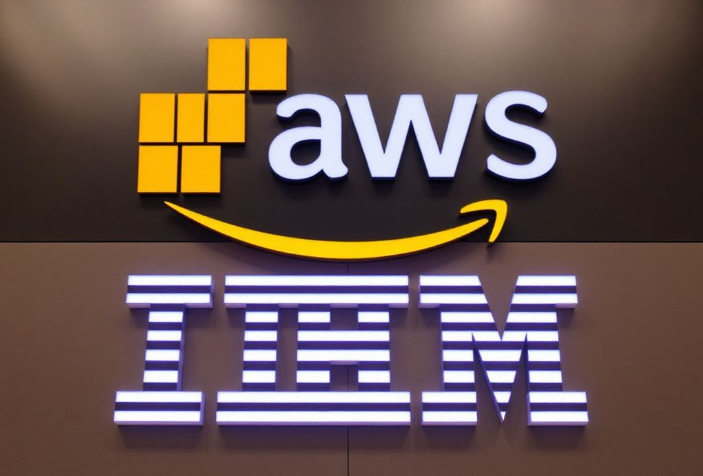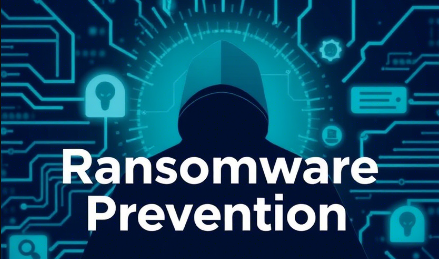Cloud Computing - Report
IBM Potential Deal with Amazon Web Services (AWS) To Access Nvidia's Highly Sought-After AI chips.
 Quest Lab Team
Quest Lab Team
The tech world is witnessing a surge in strategic partnerships as industry giants recognize the power of collaboration in navigating the complexities of the AI revolution. Two prominent examples of this trend are NTT DATA's expanded alliance with Google Cloud in the Asia Pacific region and IBM's potential deal with Amazon Web Services (AWS) to access Nvidia's highly sought-after AI chips. These partnerships underscore the importance of combining complementary strengths and resources to accelerate innovation and address the evolving needs of businesses in the AI age.
NTT DATA and Google Cloud: A Powerful Synergy for AI-Driven Solutions
NTT DATA, a global leader in IT and digital business services, is deepening its partnership with Google Cloud to drive the adoption of cutting-edge AI solutions and cloud-based data analytics across the Asia Pacific region. This collaboration leverages the combined expertise of both companies, bringing together Google Cloud's advanced AI capabilities, cloud services, and data analytics prowess with NTT DATA's extensive knowledge of large enterprises. The goal is to empower businesses to transform their operations and unlock new possibilities through tailored cloud-based solutions powered by AI, specifically designed for various industries.
John Lombard, CEO of NTT DATA, APAC, emphasizes that this partnership represents a fundamental shift in thinking, moving beyond simply adopting new technologies to reimagining the potential of businesses in the AI era. He anticipates significant growth in their cloud business in the Asia Pacific region, projecting a tenfold increase within the next three years. This ambitious target reflects the growing demand for cloud services, driven in part by the rapid rise of generative AI.
Karan Bajwa, Vice President of Google Cloud, APAC, highlights Google Cloud's commitment to instilling confidence in customers as they embark on their digital transformation journeys. He believes that NTT DATA's comprehensive portfolio and deep understanding of the evolving customer needs in the Asia Pacific region align perfectly with Google Cloud's AI leadership and innovative solutions.
To spearhead the development of collaborative solutions, a dedicated NTT DATA Google Cloud Business Unit has been established. This unit will focus on key areas such as generative AI and data analytics, while also providing support for cybersecurity, applications, modern infrastructure, and SAP services on the Google Cloud Platform (GCP). This comprehensive approach aims to ensure that businesses receive the necessary support and guidance throughout their digital transformation process.
Charlie Li, Senior Executive Vice President and Global Head of Cloud and Security Services at NTT DATA, emphasizes the significance of this partnership in delivering innovative solutions to address the unique challenges faced by their customers across various industries. The effectiveness of this approach is demonstrated by the success of a major retailer that utilized NTT DATA's technologies and Google's data analytics to achieve a 22% increase in digital inquiries and an 85% rise in occupancy.
Li expresses confidence that the combined expertise of NTT DATA and Google Cloud will accelerate their clients' digital modernization efforts, particularly in cloud computing, generative AI, and cybersecurity. He believes that merging NTT DATA's comprehensive transformation portfolio with Google Cloud's advanced technologies will be instrumental in achieving this goal.
The expanded partnership will also bolster NTT DATA's internal capabilities in Google Cloud technologies through advanced certification and training programs. NTT DATA aims to certify at least 1,000 more professionals in the Asia Pacific region, upskilling engineers and expanding their workforce with sales, pre-sales, and delivery professionals specializing in Google Cloud solutions.
IBM and AWS: Seeking AI Dominance through Strategic Collaboration
IBM is taking significant steps to enhance its AI capabilities by engaging in discussions with AWS to gain access to Nvidia's highly coveted AI chips. The proposed deal, valued at an estimated $475 million over five years, would grant IBM access to AWS's Elastic Compute Cloud (EC2) servers, which are powered by Nvidia GPUs. As part of this arrangement, IBM would also utilize AWS's SageMaker platform to train its AI models.
IBM's pursuit of Nvidia GPUs stems from its ambitious AI goals, particularly for its Watson platform. AI projects are becoming increasingly complex and resource-intensive, and Nvidia GPUs have emerged as the industry standard for handling these demanding workloads. Their speed, reliability, and specialized design for training and deploying large-scale AI models make them essential for organizations at the forefront of AI innovation.
Watson AI plays a vital role in industries like healthcare and finance, where precision is paramount. To stay ahead of the competition and meet the evolving demands of these sectors, IBM recognizes the need for cutting-edge technology. However, IBM is not alone in its pursuit of Nvidia GPUs; other tech giants such as Google and Meta are also vying for these powerful chips to fuel their AI initiatives. Since IBM doesn't manufacture its own chips, collaborating with AWS to access Nvidia's hardware is not just a strategic choice but a necessity.
This potential deal could significantly strengthen AWS's position in the AI cloud market. AWS already offers a comprehensive ecosystem for AI development, with tools like SageMaker that simplify the process of training and deploying AI models. By partnering with AWS, IBM can scale its AI initiatives without having to invest heavily in expensive hardware infrastructure.
It's worth noting that AWS has been actively promoting its own custom-designed chips, Trainium and Inferentia, as more cost-effective and energy-efficient alternatives to Nvidia GPUs. However, IBM's decision to prioritize access to Nvidia's offerings highlights the enduring trust and proven performance associated with these chips. For now, Nvidia remains the preferred choice for companies that prioritize performance over pricing.
AWS's AI business is experiencing rapid growth, with CEO Andy Jassy recently stating that it's expanding at "triple-digit percentages" and is on track to generate multibillion-dollar revenues soon. A partnership with IBM could further accelerate this growth trajectory and solidify AWS's position as a leader in AI infrastructure.
For Nvidia, this development further confirms its market dominance. Despite competition from AWS, Google, and Meta in the chip manufacturing space, Nvidia's GPUs remain the go-to solution for advanced AI workloads. However, this surging demand has led to supply shortages, driving up prices and intensifying competition for these valuable resources. Securing access to Nvidia GPUs is not just a strategic move for IBM and AWS; it's crucial for remaining competitive in the rapidly evolving AI landscape.
In addition to the potential deal involving Nvidia GPUs, IBM and AWS have expanded their collaboration by making IBM's software offerings available on AWS Marketplace in 92 countries, up from just five previously. This expansion gives businesses worldwide access to IBM's AI and data solutions, including Watsonx.data and Watsonx.ai, as well as flagship offerings like Db2 Cloud Pak for Data.
This development reflects a growing trend of collaboration among tech giants to meet the increasing demand for cloud-native solutions. Analysts view this as a pivotal moment, signaling a broader shift toward greater collaboration across the technology industry.
The Future of AI: A Collaborative Landscape
Whether it's access to Nvidia GPUs or the expanded availability of software solutions, the partnership between IBM and AWS exemplifies a win-win scenario. IBM gains the tools it needs to advance its AI ambitions, AWS strengthens its rapidly growing AI business, and Nvidia solidifies its position as the leading provider of AI hardware.
This collaboration highlights the direction in which the tech world is heading: towards partnerships that foster innovation. As AI continues to reshape industries, organizations that effectively leverage each other's expertise and resources will be the ones to watch. In the age of AI, collaboration is not merely a strategic advantage; it's essential for success.

Quest Lab Writer Team
This article was made live by Quest Lab Team of writers and expertise in field of searching and exploring
rich technological content on cloud computing and its future with its impact on the modern world



